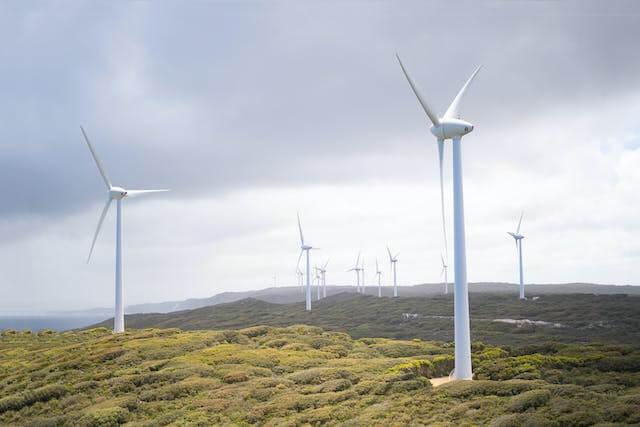1. Introduction
Coal power plants have long dominated the energy scene in Queensland and New South Wales (NSW), where they are essential to supplying the demand for electricity. However, there has been a noticeable trend in favor of renewable energy in recent years due to the increased awareness of climate change and the necessity of switching to greener energy sources. Environmental concerns, technological developments in renewable energy, and government laws supporting sustainable energy practices are some of the drivers driving this transformation.
In light of this, there is growing conjecture regarding the potential for coal-fired power plants in Queensland and New South Wales to retire earlier than planned. In addition to being a major source of greenhouse gas emissions, these outdated plants are facing financial difficulties as renewable energy sources become more affordable. This article examines the potential ramifications of these states retiring their coal-fired power plants earlier than planned, as well as the opportunities and difficulties that come with the change.
2. Current State of Coal Power Stations
The production of electricity in Queensland and New South Wales (NSW) is mostly dependent on coal-fired power plants. Because of their greenhouse gas emissions, these old plants provide environmental issues in addition to operational difficulties.
Gladstone Power Station, Callide Power Station, and Stanwell Power Station are a few of Queensland's well-known coal-fired power plants. These stations have been producing power for the state for many years, making up a sizeable amount of the total electrical supply. Power plants like Liddell and Bayswater in New South Wales have been essential to supplying the energy needs of the area.
The efficiency and environmental impact of many of these coal-fired power plants are being questioned as they near or exceed their planned lifespans. The aging infrastructure reduces their competitiveness in comparison to newer energy sources due to increased maintenance costs and lower reliability.
In both states, there is an increasing trend away from coal-fired power facilities and toward renewable energy sources. Data show a steady rise in the amount of electricity produced by renewable energy sources such hydroelectricity, wind, and solar power. This shift is indicative of a larger worldwide movement away from fossil fuels and toward renewable energy sources in an effort to slow down climate change.
The growing momentum surrounding the early retirement of coal-fired power plants underscores the need to carefully consider the economic, social, and environmental effects of these choices. Politicians and other stakeholders in the energy sector face a difficult task in striking a balance between the necessity of a steady supply of electricity and the requirement to cut carbon emissions.
3. Factors Driving Early Retirements
In QLD and NSW, early retirements of coal-fired power plants are being driven by many factors. This move towards cleaner energy sources is mostly being driven by environmental concerns, notably those pertaining to carbon emissions and the requirement to abide by climate change legislation. These closures are being driven by the need to cut greenhouse gas emissions and move toward sustainable energy sources.
The choice to retire coal power plants early is heavily influenced by economic factors as well. Older coal plants can have high maintenance costs, which reduces their competitiveness when considering renewable energy sources like wind and solar power. Many businesses are choosing to invest in more inexpensive and ecologically friendly energy solutions in order to stay in business.
The retirement of coal-fired power facilities is being influenced by community expectations and public pressure. Cleaner energy alternatives are in greater demand as people become more conscious of how fossil fuels affect the environment. Greener practices are being pushed by communities, who are pressuring utilities to give sustainability first priority and switch from coal to renewable energy sources.
4. Impacts of Retiring Coal Power Stations
There will likely be multiple effects on QLD and NSW's energy landscape from the retirement of coal-fired power plants. First, because supply and demand dynamics may alter, electricity costs may fluctuate. The grid's dependability may be initially strained by these retirements, but over time, improvements in infrastructure for renewable energy sources may assist to lessen this problem.
Although there is cause for concern regarding job losses in the coal business, the shift also offers potential for job development in the renewables sector. Supporting employees impacted by these closures and ensuring a more seamless transition to cleaner energy sources can be achieved by funding retraining initiatives and assisting career changes.
Strategic planning is essential to effectively manage this transition and support the impacted communities. To create regulations that allow the decommissioning of coal power plants while generating new economic opportunities, governments, industries, and stakeholders must collaborate. Mitigating the social impact of these closures can be achieved through providing job placement services, financial assistance, and upskilling programs to affected personnel.
5. Future Outlook
The retirement of coal-fired power facilities in Queensland and New South Wales is expected to proceed smoothly in the coming ten years, according to projections. A move towards cleaner energy sources is being signaled by the increasing popularity of government initiatives and laws that encourage the adoption of renewable energy. Profitable chances for investors to profit from the rising demand for clean energy projects and technological developments that facilitate the generation of sustainable energy are becoming more and more abundant. With bright possibilities for a more sustainable and ecologically friendly future, this shift represents a momentous shift in Australia's energy landscape.

